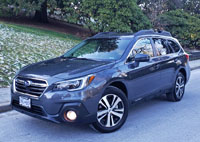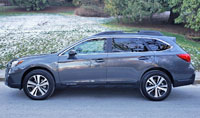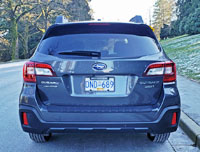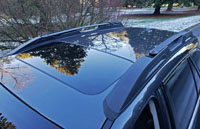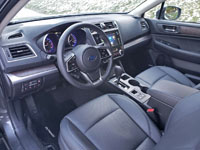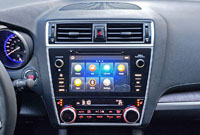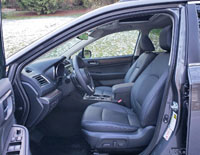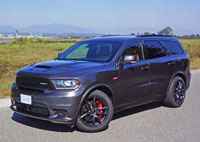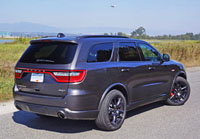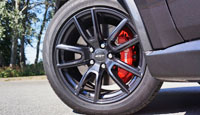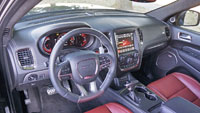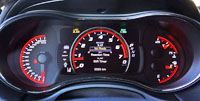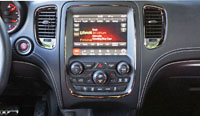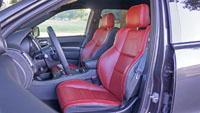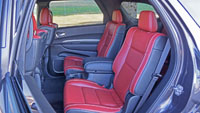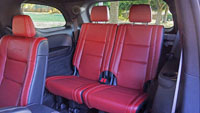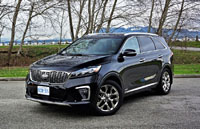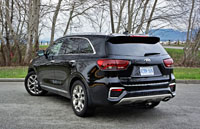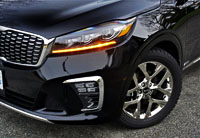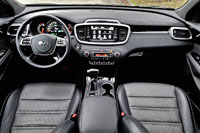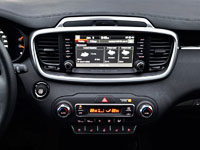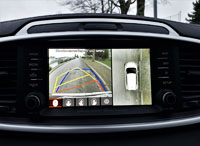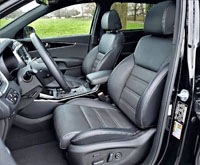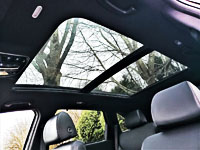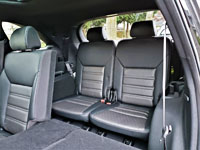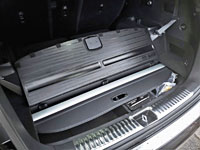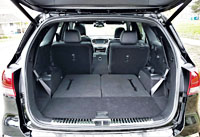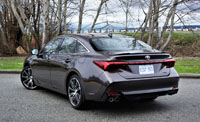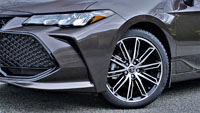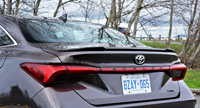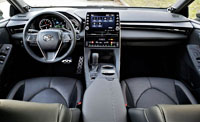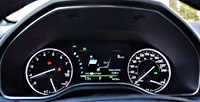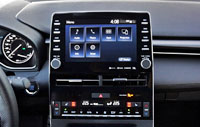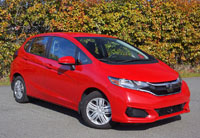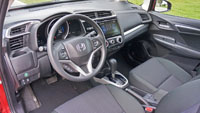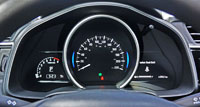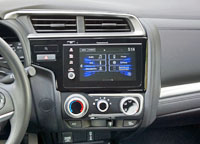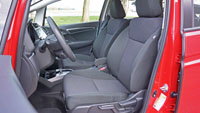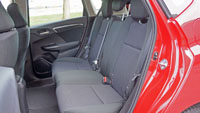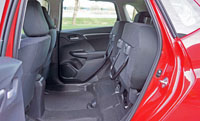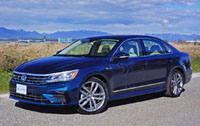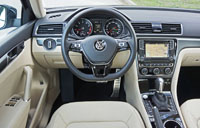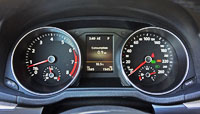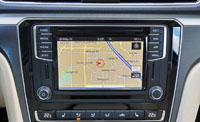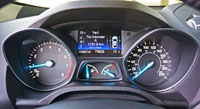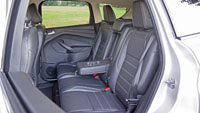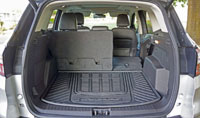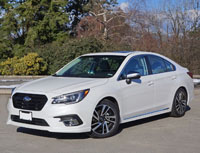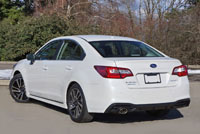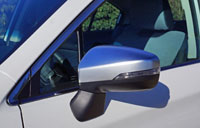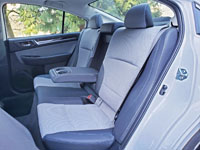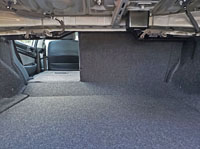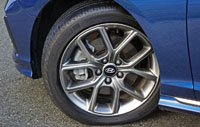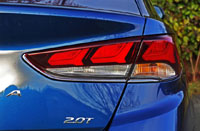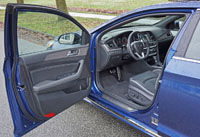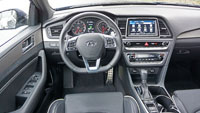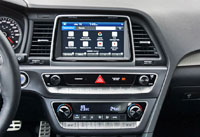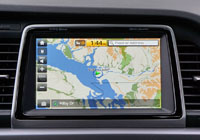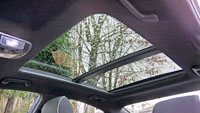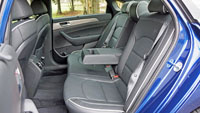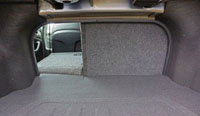
When you think of Buick, does the word “global” come to mind? While those outside of North America and China may not have ever heard of the Buick brand name, most of its models are sold under alternative badges in other jurisdictions, such as Opel in continental Europe, Vauxhall in the UK, plus Holden in Australia and New Zealand, while the cars and crossover SUVs sold here are often made somewhere else.
For instance, I recently reviewed a 2019 Regal GS (see the 2020 model here) that was designed by GM’s German and Australian divisions cooperatively, with input from its North American and Chinese arms, and then built in Rüsselsheim, Germany, plus Shanghai for the Chinese market, the latter assembly plant producing the LaCrosse full-size sedan (check out the newest LaCrosse here) as well, a car I last reviewed in 2017, although our variation on Buick’s flagship four-door is assembled at the General’s Detroit/Hamtramck plant.
A nameplate you may not be as aware of yet plays a more important role in Buick’s future is its compact Envision crossover SUV (check out the refreshed Envision here) that I reviewed the same year. While the Envision is related to both Chevy’s Equinox and GMC’s Terrain it was mostly designed and fully produced in China, plus is the first mass-produced vehicle to be fully assembled in China and sold to the U.S. and Canadian markets.
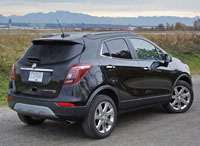
The only U.S.-built vehicle to receive a Buick badge after the LaCrosse departs later this year will be the mid-size three-row Enclave (see the redesigned 2020 Enclave here) crossover SUV, made in Lansing, Michigan. Even the soon-to-arrive mid-size five-occupant Envoy, reportedly based on the new Chevrolet Blazer, will probably be produced in GM’s Coahuila, Mexico plant, where the Blazer currently calls home, but quite likely the upcoming Enspire, an SUV planned to squeeze in between the Encore and Envision, will be produced at the GM Fairfax facility in Kansas, being that initial hopes to import it from China aren’t appearing as promising as they once did.
Finally, the Encore hails from GM’s South Korean division that was formed from the remnants of Daewoo Motors. It’s produced in Bupyeong-Gu, Incheon next to the Chevrolet Trax, which incidentally is mostly the same subcompact SUV below the surface.
We’ll see a totally redesigned Encore for 2020, although we’ll need to wait until spring to purchase it. Today’s version hasn’t changed much since its stylish refresh for the 2017 model year, while it’s still in its first-generation, meaning it hasn’t been changed (much) below the skin since it arrived in 2012. I’ve tested and reviewed this model right from the beginning, and always appreciated it for what it was and still is, a nice, comfortable, quiet, fuel-efficient, surprisingly refined, even more surprisingly enjoyable to drive, reasonably well-featured, spacious city car/crossover with good all-season capabilities when AWD is added.
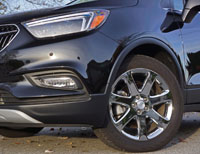
For the above reasons I believe the Encore is one of the more intelligent buys in the entry-level subcompact sector, particularly for those of us who like being pampered. The 2019 Encore can be had for only $26,400 (plus freight and fees) before topping out at just north of $41k when all options and the majority of accessories get added, which is about where the majority of premium-badged players start off. To be fair, however, true luxury-branded subcompact SUV “rivals” such as BMW’s X1, Mercedes’ GLA, Audi’ Q3 and the list goes on are in a different league than Buick and this Encore when it comes to performance, interior finishings, available features, and all-important prestige.
Outside of China, where Buick has never really lost its premium sheen since the tailings of its dynastic era and once promising Republic rule, the three-crested badge doesn’t demand as much respect as Cadillac, which (unfortunately for GM) doesn’t impress to the degree of the previously noted German marques or even relative upstart Lexus. The Toyota-owned subsidiary only just ventured into this subcompact luxury SUV marketplace with its UX, a stylish little crossover that probably targets the type of comfort- and efficiency-first buyer the Encore attracts more closely, and therefore has quickly found significant traction on the sales charts to Audi’s dismay (the Q3 now sits in third behind the BMW X1 and Mercedes-Benz GLA-Class, or fourth if including the Encore).
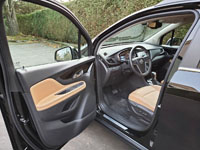
Buick found 10,637 Encore customers in Canada through 2018, and continues to do quite well in the more mainstream volume-branded subcompact SUV segment too, achieving fifth place out of 17 challengers last year, with all but the Mini Countryman priced lower, the German-owned Brit asking $31,690 for its base SUV, although that model most often sells for more than $40k and can easily top $50k when adding features. That John Cooper Works Countryman is one of the better performing small SUVs at any price, mind you, while the Encore’s customers are much more interested in the attributes noted earlier, such as comfort, quietness, fuel efficiency, etcetera.
Achieving a high level of refinement is difficult in a small vehicle, and making matters worse the Encore is one of the smallest in its class. It’s actually smaller than the current Countryman as well as the older first-generation model (the current one has grown quite a bit), and it’s also smaller than the Nissan Qashqai, Toyota C-HR and Jeep Compass, not to mention all the premium-badged subcompact SUVs. This said the Encore is bigger than the Honda HR-V, Kia Soul, Ford EcoSport and a number of others, with some closer to its size being the Mitsubishi RVR, Nissan Kicks and Hyundai Kona, and finally a couple of SUVs nearly identically sized being Jeep’s Renegade and Mazda’s CX-3. Still, the Encore is tall enough that headroom will only be an issue for giants, while its cargo carrying capacity is also spacious.
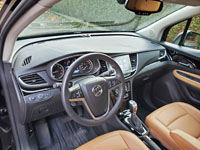
Lower its 60/40-split rear row and the little Encore can carry up to 1,371 litres (48.4 cubic feet) of cargo, and this is made easier thanks to seatbacks that lay flatter than most competitors due to their folding process that requires each lower cushion to first be flipped up and forward ahead of manually lowering each headrest and folding each backrest down. It’s certainly more labour intensive than its competitors’ seat systems, but the end result is more usable space.
While all this is good, what would you do if you needed to stow something longer and more awkward than most subcompact models can accommodate, such as a cupboard, small wardrobe, a stack of 4x4s for building a fence, or simply a big, beautiful carpet that you just had to have? Simple, put your significant other (or child) directly behind you in the back seat and drop the front seatback down for full front to back storage. You can load 2.4 metres (8.0 ft) of what-have-you inside, which is impossible with most competitors. By the way, when all seats are upright there’s 532 litres (18.8 cubic feet) in the very back, which is approximately what you’d find in full-size sedan’s trunk, also impressive. As just made clear, the many passenger and cargo configurations capable in the Encore makes it more practical than most rivals, which is a key reason why it’s long been so popular.

Driving dynamics should be high up on its list of positive attributes too, but not for sportiness or anything so trivial. Of course, its MacPherson strut front and compound crank (torsion beam) rear suspension allows it to go quickly enough around corners, while it takes off fast enough from stoplights, plus feels plenty stable at highway speeds and beyond, but more importantly the Encore is really easy to drive. It starts with superb sightlines in every direction due to its tall ride height and ample side and rear glass. The Encore’s ride quality is very compliant too, expected from Buick. It soaks up pavement imperfections without issue, while its oh-so quiet when compared to its mainstream compact SUV rivals. This is where Buick’s QuietTuning makes such a difference, the Encore’s standard active noise cancellation and extra insulation helping to reduce road and wind noise while adding to its sense of quality.
Depending on where you live in Canada or your lifestyle, you’ll want to decide whether you’ll be ok with front-wheel drive or if all-wheel drive is needed. The Encore can provide either, AWD adding $2,000 to the base model’s price tag for a new $28,400 total, while for only $1,030 you can also upgrade the base 1.4-litre turbo-four’s sequential multi-port fuel injection with more technologically advanced Spark Ignition Direct Injection (SIDI), which increases its output from 138 to 153 horsepower and raises torque from 148 lb-ft to 177. The upgrade also adds Start-Stop technology to the Encore’s standard six-speed automatic transmission, this shutting off the engine when it would otherwise be idling, and then automatically restarting it when lifting off the brake pedal.

My Encore test model incorporated both upgrades, making a major difference during standing starts, particularly in slippery conditions, while the extra power and added traction improved hill climbing, cornering, and passing manoeuvres, not to mention its drivability around town. Thanks to a 1,386-kilogram (3,056-lb) curb weight, this AWD model doesn’t require much power to get it going, while this general lightness makes it easy to slalom through tight city streets, especially when congested, all the while being particularly good on gas.
The base FWD Encore achieves a claimed 9.4 L/100km city, 7.8 highway and 8.7 combined rating, while the identical engine with AWD is estimated to get 9.9 in the city, 8.1 on the highway and 9.1 combined. Even more impressive, combining the additional power of SIDI with advanced Start-Stop technology actually reduces the Encore’s fuel usage to 8.9 L/100km in the city, 7.5 on the highway and 8.3 combined when hooked up to its FWD drivetrain, or a respective 9.4, 7.9 and 8.8 with its top-line AWD SIDI combination, making this reasonably priced upgrade well worth it.
While inherently less efficient as a continuously variable transmission (CVT), the go-to gearless autobox of most subcompacts and compacts these days, the Encore’s more conventional six-speed automatic is much more enjoyable to drive, especially with thumb planted on the gear knob-mounted rocker switch that prompts manual mode.

First you’ll need to pull the shift lever all the way back to its “M” or manual position, and then shift away to your heart’s content. While the gearbox lets the engine rev right up to redline without shifting, unusual for a vehicle in this class, making it feel sportier than rivals that don’t, I wouldn’t go so far as to say the Encore is a serious sport model, particularly when revving the engine higher than normal for everyday use, at which point it makes more noise and causes more vibrations than most will appreciate, par for the course in this class. Still, shift it earlier (and you can, as there’s no shortage of torque in the lower rev range) and the Encore will get you where you’re going quickly while providing plenty of fun along the way. All said I found it best in a more relaxed state, which allowed the little Buick to make the most of its smooth ride and general comfort.
Part of getting relaxed is a good driving position, and the rake and reach of the Encore’s tilt and telescopic steering column, combined with fairly good adjustment of its driver’s seat, made optimizing comfort and control easy. I have longer legs than torso, which often forces me to push the entire seat rearward, leaving the distance to the steering wheel farther than arm’s reach. Fortunately this is no problem with the Encore, despite its partial powered seat adjustments that only include the lower cushion, and optional powered two-way lumbar support. The backrest needs to be reclined, or in my case inclined manually, which worked well enough, while the lumbar support luckily found the small of my back well enough (not always the case with two-way/in-and-out designs).
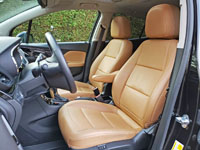
The driver’s seat is inherently comfortable, and I appreciated its minivan-like folding centre armrest, while my tester’s Shale beige leather upholstery (Ebony black or Brandy wine are also on the menu) and attractive contrast stitching looked good, but I wouldn’t go so far as to call them fancy. Buick doesn’t offer cooling seats, for example, or even the leather perforations to keep them naturally ventilated amid summer’s heat, although the three-temperature seat heaters got plenty hot when set to high, and the heated steering wheel rim could be set up to automatically turn on with when starting the car. I loved that feature, and only wished Buick would make the seats follow suit.
Speaking of equipment, Buick simplified the Encore lineup this year with only three trims including Preferred, Sport Touring and Essence. Base Preferred trim includes 18-inch alloys, proximity keyless entry with pushbutton start/stop, a big 8.0-inch centre touchscreen featuring a backup camera with dynamic guidelines, Android Auto and Apple CarPlay smartphone integration, plus plenty of additional features, while yet more base features include a cargo cover and 10 airbags to go along with plenty of other passive and active safety gear.

The move up to the 2019 Encore’s mid-range Sport Touring trim starts at $28,400 and adds fog lamps, a rear rooftop sport spoiler, and remote engine start, while my tester’s top-line Essence trim starts at $31,700 or $34,730 with AWD, and includes the heatable steering wheel noted earlier, leather seats with driver’s memory and heated cushions up front, an auto-dimming centre mirror, a garage door opener, and blind spot warning with rear cross-traffic alert.
You can spend a bit less if you want the last two items in lesser trims, the available Safety Package also including a three-prong household-style 120-volt power outlet in back, while those choosing Essence trim can get the $1,110 New Safety Package II boasting all of the just-noted features above plus forward collision alert, lane departure warning, rain-sensing wipers, an air ionizer, and front/rear parking sensors.
My tester included that group of features as well as the $3,050 Experience Buick Plus Package, which deducts $650 due to the inclusion of all the New Safety Package II items, while adding a unique set of 18-inch seven-spoked chromed alloys, navigation/route guidance, and a power moonroof.
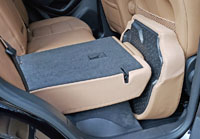
All of the above made for well-equipped urban runabout, with better interior quality than most non-premium challengers offer, and only slightly less refinement than the higher echelons of luxury provide. Details include cloth-wrapped A pillars, soft-touch surface treatments for the dash plus front and rear door uppers, and an attractively padded and stitched leatherette instrument panel bolster.
The instrument cluster is laid out in a traditional design, with its analogue tachometer at the left and speedometer on the right, plus its gas gauge and temperature readout sitting above a decent sized colour multi-information display at centre. It’s fairly fully featured, but obviously not offering the wow factor of some competitors’ digital gauge clusters. Only time will tell if Buick goes so far with its updated 2020 Encore, or even its pricier models, but we can likely expect improvements either way.
Framing those gauges is a standard steering wheel that feels sportier and thicker than most will expect from such a practical and price-sensitive SUV, and on that note its leather wrap is nicer than expected as well. Stylish satin-silver accents get added to the lower edge of its 9 and 3 o’clock spokes, plus its large lower centre spoke, this trim feeling cool to touch and therefore coming off as real aluminum. There’s more of this metal trim elsewhere, plus the door handles are chromed to help brighten things up inside, while some tastefully applied piano black lacquer adds to the Encore’s upscale interior ambiance.
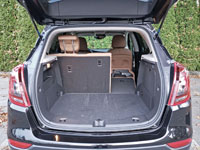
The aforementioned infotainment system incorporates Buick’s newest touchscreen interface, which apes Chevrolet’s impressive system in all the best ways. This said it’s not as colourful a la Apple’s iPhone or iPad, but rather provides a more sophisticated looking blue on black motif. I found the system’s optional navigation system worked well with accurate route guidance, while its audio functions were easy to operate and satellite radio reception was better than average. The big screen provided a clear rearview camera too, but I was a bit miffed that no 360-degree surround camera system was on the options list, normal for an SUV hoping to attract premium buyers.
I was also disappointed to learn I couldn’t charge my smartphone wirelessly. In fact, I couldn’t even fit my medium-sized Samsung S9 on the rubberized tray included, so I suppose a wireless device charger would’ve been a moot addition, but Buick did include some USB charging ports, plus an aux input and a 12-volt charger. No doubt the next-gen Encore will offer wireless device charging, as it’s now available in entry-level compact hatchbacks and sedans, so we have something to look forward to with the launch of the redesigned 2020 model this spring.
On the positive, the Encore’s dual-zone automatic climate control interface is 100-percent useful, especially for those of us who would rather push and twist conventional buttons and dials when inputting temperatures and other functions, which is certainly less challenging while driving than doing so within the infotainment interface, like some others require.

I hope you don’t mind me getting into every little detail with this review, but I think the Encore deserves some extra attention. It would be easy for someone considering a subcompact mainstream or luxury SUV to merely glance past because of its age and Buick’s unusual position as a near-luxury brand, causing some to think it’s probably too expensive and others to look higher in price, for one of the more exclusive European or Japanese brands. I think, at least for those prioritizing comfort, efficiency and practicality, looking past the Encore might be a mistake, as even this aging model remains a very good option, that won’t cost much more than mainstream volume models, and doesn’t leave much of the table when compared to some premium brands’ entry SUVs.
In case you’re not quite sure what you should do, I recommend checking out our 2019 Buick Encore Canada Prices page for more details, while you can also use your CarCostCanada membership to find out about current rebates and dealer invoice pricing that could save you thousands. In fact, at the time of writing (December 8, 2019) Buick was offering up to $5,390 in additional incentives, which could make this 2019 Encore an excellent buy.
If you choose the 2019 Encore you certainly won’t be alone, this model remaining very popular for good reason.
Story and photo credits: Trevor Hofmann

